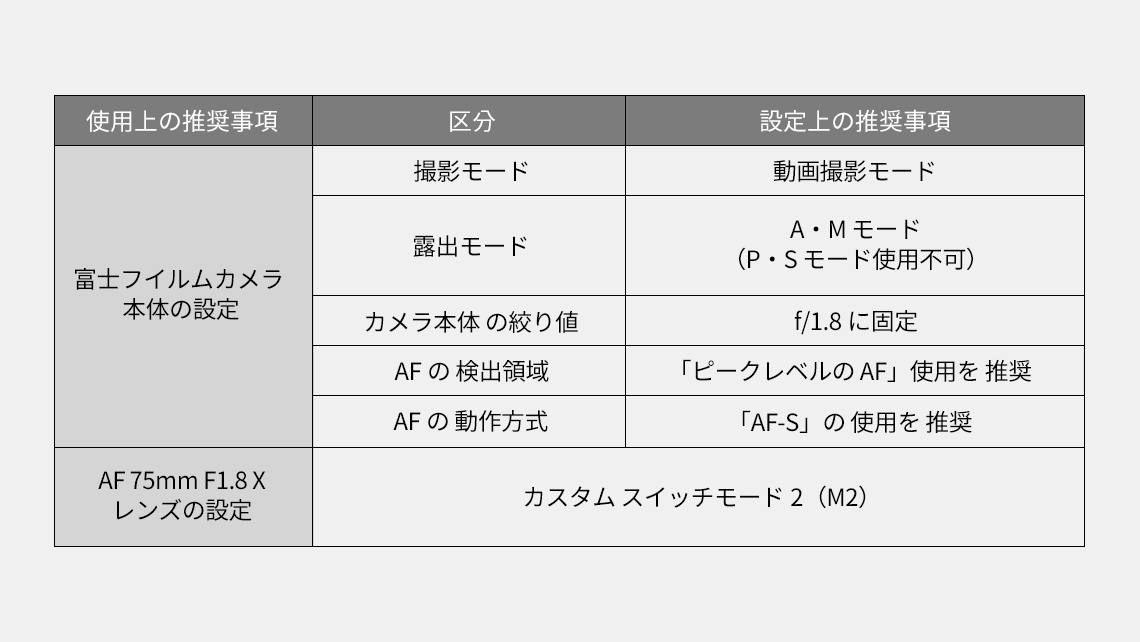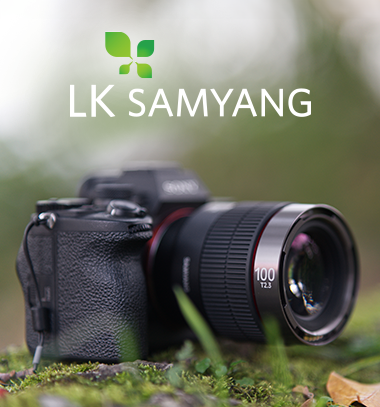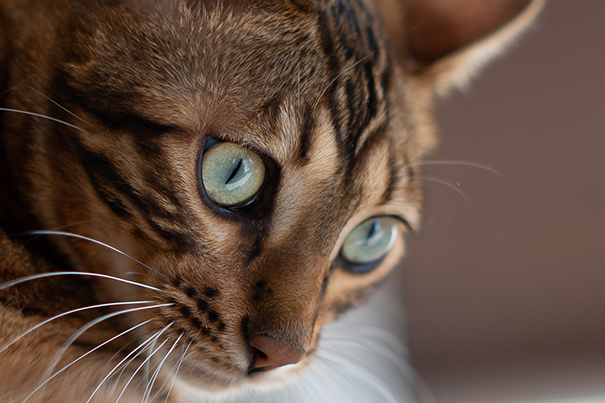BLOG
AF 50mm F1.4 FE II, Compelling Option Among the Best AF 50mm Lenses
I spent my first time with an autofocusing Samyang lens in early 2018, and, ironically, it was a 50mm F1.4 lens for Sony FE. That lens was the predecessor of the Samyang AF 50mm F1.4 FE II which I’m reviewing today.
Since that point, however, I’ve reviewed a LOT of Samyang autofocusing lenses (about eleven), and my excitement for the direction of the company has steadily grown.
I’ve witnessed a growing maturation in both autofocus and lens design. Samyang’s development on full frame has split between two tracks – the compact “Tiny” series (compact lenses with a maximum aperture of F1.8 or less) and the larger “pro series” lenses (the F1.4 type options). I was excited when I heard that Samyang was developing a Mark II version of the 50mm F1.4, as I knew that they were capable of making a much more compelling option than the one that I’d previously reviewed.
And the AF 50mm F1.4 FE II is that. It is better optically, has much better autofocus, and now has more modern features like a focus hold button, custom switch to give more physical control on the lens, and weather sealing. This is now a much more compelling alternative to the first-party Sony options.
Image Quality
The first generation Samyang AF 50mm F1.4 employed an optical formula with 9 elements in 8 groups. This included three aspherical elements. We’ve got a new optical formula here with 11 elements in 8 groups, which includes more special elements like 2 Ultra-precision Aspherical elements, 3 High Refractive optic elements, and 1 Extra-Low Dispersion element. Bottom line is that we’ve got twice as many exotic elements that result in a better-looking MTF (and real world) performance.
Vignetting
Surprisingly I didn’t find the vignette very obvious in real-world shots in the snow, either. You can see from this snowy shot of some dried remnants of last fall sticking up that the corners don’t look particularly dark. I’m not sure if some kind of correction is being embedded in the RAW file or if the vignette is gradual enough that it doesn’t look obvious,
but either way I didn’t see much that needed correction in my real-world shots.
Chromatic Aberration
So how about chromatic aberrations? I found only small traces of lateral chromatic aberrations along the edge of the frame, and some mild longitudinal chromatic aberrations (LoCA) can be seen as purple and green fringing before and after the plane of focus at wide apertures. I didn’t really feel like I saw enough fringing to ever be objectionable.
I’ve long noted that a slight bit of uncorrected CA often produces slightly softer bokeh.
Resolution and Contrast
That’s a pretty awesome result. Everywhere looks nice and crisp save the final few percentage points of the extreme corner even at high magnification of a 50MP image.
The image looks pretty flawless at 100% magnification.
Real world images are nice and crisp even at F1.4, as you can see from this shot.
By F2.8 the lens is extremely sharp across the frame. By F4 it is pretty close to flawless, with excellent performance everywhere you look.
Blurred Background
A 50mm F1.4 at closer focus distances has the ability to really obliterate backgrounds at wide apertures, and that’s certainly true here. Look at how this decoration quickly disappears to complete blur.
I’ve yet to see a bad situation for the bokeh rendering here, which handles everything quite effectively. Here are a few more bokeh shots to show off the lens’ chops.
Bokeh
Here’s a look at the shape of the bokeh circles at F1.4, F2, and F2.8. The geometric shape is pretty nice, and the bokeh circles are nice and soft. There’s no busyness in the bokeh circles, though you can see a light green fringing around the edges. Not enough to be distracting, but not completely neutral, either.



Flare
I was also pleasantly surprised by the AF 50mm F1.4 FE II’s ability to handle flare. This is normally not a strength for wide-aperture prime lenses, but this seems to be the exception. In the first shot in this series, I took the image at F1.4, and even then contrast holds up with very little ghosting. The second shot in the series shots the same scene at F11, and things have not gotten worse. Shot #3 was a real-world shot in extremely bright (Arctic bright!) conditions (the temperature was nearly -30C with the wind chill).
The sun was right in the frame and I wanted got the bright light coming through the cattails. I expected some flare issues, but, as you can see, got basically nothing.



Short M.O.D
Early Samyang AF lenses didn’t excel when it came to minimum focus distance and magnification, but recent ones have been better. Here we have a minimum focus distance of 40cm (same as the Sony GM lens) and a magnification figure of 0.16x.

Build Quality
As noted, the AF 50mm F1.4 FE II is a reflection of Samyang’s growing design evolution. It actually takes most of its design clues from their most recent APS-C lens – the AF 12mm F2 E. That lens was the first to highlight the new diamond pattern texture of the focus ring and to transition Samyang’s red ring to the new “hidden ring” design where the red is only visible from the front of the lens as it is somewhat hidden in the front fascia of the lens barrel. The resulting lens design is clean and modern, and scales up nicely to a slightly larger lens like this one.
Compact & Lightweight
But that’s only slightly larger, as this is a surprisingly compact and light lens for a high-performing 50mm F1.4 optic. The AF 50mm F1.4 FE II is 80.1mm (3.2″) in diameter and 88.9mm (3.5″) in length and weighs a very light 420g. That’s a full 20mm shorter than other brand option, and about 360g lighter. I was surprised to find that it is actually shorter even than the competitor’s FE 35mm F1.4 lens. The other brand’s lens at similar price rate to the Samyang, but that’s more than twice the weight and about 40% longer.
Samyang has even managed to produce a smaller lens relative to the original AF 50mm Samyang lens, which is 73.5 x 97.7 mm and weighs 585g. That’s impressive when you consider the MK II lens is better optically, has weather sealing and actual features, and sports a superior autofocus system.
This is a really nicely executed lens if you value the “smaller and lighter” ethos. It manages to pack a nice feature set and good handling into a noticeably smaller and lighter package. I own a lot of great lenses of various sizes and weights, but I’ll freely confess that there are often situations where I reach for the lighter lens even though I have a better lens (that also happens to be larger and heavier) in my kit. The smaller size and weight of the AF 50mm F1.4 FE II might be the difference between it getting brought along or left behind.
Weather Sealing
Speaking of those features…I’ve watched Samyang grow in their lens design over the past 3-4 years as they steadily debuted new features. This started with weather sealing as a part of the design with the AF 85mm F1.4 and continues here. I count six seal points from this diagram, including at various transition points in the lens
(front and rear element, either side of the focus ring, and at the switches).
I consider weather sealing to be a must if you want to market your lens as a premium or professional lens, and Samyang has smartly recognized that many photographers feel the same. They’ve definitely embraced weather sealing as a part of lens design, which does help inspire confidence when the weather turns during a photo shoot.
Convenient Buttons
We’ve also got a couple of newer features for Samyang which have debuted over the past two years. One is a custom switch that gives you some options for how the focus ring will be used. You can tweak the options via the Samyang Lens Station (I definitely recommend as it also allows you to quickly update the firmware.) This might help with some improvement to performance and also will keep your investment “future-proofed”). My preferred setup is that the M1 position has the ring focus as an aperture ring and the M2 position automatically enables manual focus. This gives you the functionality of an aperture ring and an AF/MF switch in one. There’s also now a focus hold button which can be programmed to a variety of functions from within the camera just like on a Sony lens.
Focus Ring
The manual focus ring is nice and wide and has that new textured surface (with a rubberized finish). I like the tactile feel of the “micro pattern” (as Samyang calls it) and feel like it offers good grip. The damping of the focus ring is fairly heavy, though it moves smoothly overall. The focus action appears to be linear (non-speed dependent), which is good for repeatability, though the focus throw is too long for major video focus throws. You need about 5 normal focus rotations to travel the extremes of the focus range, and I estimate the whole focus throw at somewhere near 380°. So, while the feel of the focus action isn’t bad, I feel like it could be more precise and easier to make focus changes on.
On a positive note, the automatic magnification of the active focus area is engaged with the lens, which helps make the manual focus process more intuitive and accurate.
Autofocus Performance
The Samyang AF 50mm F1.4 II employs a Linear STM focus motor. This is a much smoother and quieter focus motor than what I encountered in the first-generation lens.
I was pleasantly surprised by how stable the lens was when tracking my face during the 3-4 video episodes I filmed with it during my review. I saw no hunting or loss of focus;
it stayed solidly locked onto my eye/face without any pulsing. I was also very pleased with my focus accuracy when shooting stills, where even very narrow depth of field situations returned very consistently good focus results on my Sony Alpha 1.
Low-light Performance
That larger maximum aperture (F1.4) does help the AF 50II focus in low light compared to lenses with a smaller maximum aperture. I did a number of low light tests of my pets and got good eye detection and well-focused results even in very gloomy conditions (1/50th second, F1.4, ISO 3200).
Eye AF
Eye AF works very well whether a human or animal is the subject. Here’s a shot of Loki at F1.4, and the crop shows great focus precision.
Likewise, this casual shot of my daughter on a Zoom meeting shows great precision on her eyelashes even though her head was down and she wasn’t looking at the camera at all.
I had my assistant, Craig, do a portrait session at a variety of focus distances and through a variety of foreground objects to test autofocus accuracy.
He was using the new Sony a7IV for the very first time, but Eye AF makes it all pretty easy these days. I went through all the results with a careful eye and didn’t find any misfocused results. There were some discards for eyes being closed and my generally looking stupid sometimes, but none that were discarded for technical reasons.
Out of about 45 results, all were well-focused. Here’s one at F1.4
So, other than the lens lacking a bit of torque in some situations, I felt like the autofocus performance was generally very good.
This is a huge improvement over the first-generation lens. I shot with both the high-end Sony Alpha 1 and the more moderately priced a7IV with good results on both.
Conclusion
I was delighted to see Samyang revisit the 50mm F1.4 formula and give us a new and updated lens, as frankly there still aren’t a lot of 50mm F1.4 options on Sony FE.
The compact and lightweight design of the Samyang AF 50mm F1.4 II while also providing a nice build and a good list of features is a winning combination in my mind.
I had good autofocus performance, loved the physical design and presence of the lens, and found the optical performance to be pretty competitive with some of the best 50mm options I’ve ever tested. This is an unquestionable value, and I see no reason why this lens should not become a favorite among many users.




 AF 50mm
AF 50mm SONY
SONY F1.4
F1.4
 1/2000 sec
1/2000 sec
 200
200
 Aperture
Aperture 50mm
50mm
 -
-
 Multi
Multi






























